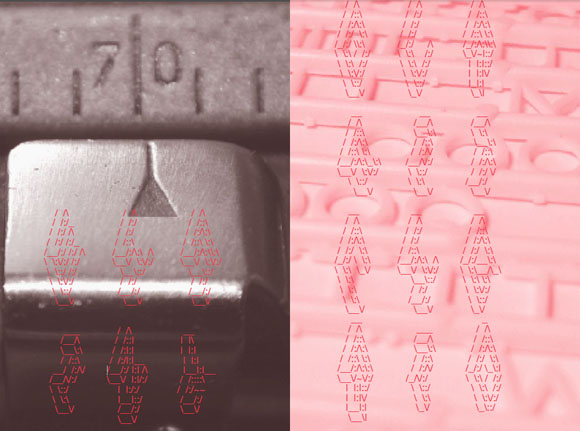In the PR business, architectural definitions can help clients visualize how public relations works. A “communications architecture” shows how your public relations program reaches the audiences important to you; a “messaging blueprint” defines the parameters of how to talk about your firm; a “messaging foundation” is what you start with to build your story.
To help explain the PR business to architects, I’ll reverse the analogy: seeing an article about your firm or work in the media is equivalent to an open house celebrating the completion of your building. The work started months or years before and involved a lot of strategy, creativity, persistence, and hard work. So does PR.
While a comprehensive public relations program involves far more than media relations—managing relationships with the media important to the success of your firm—that’s what people think of when they hear the term “public relations.” Effective media relations leverages business developments and maximizes unplanned opportunities or events that may be of interest to the media. For the purposes of this article, we’ll focus on improving your attempts to generate media coverage and the basics that govern incoming queries from the media.
Start with a blank sheet of paper and write a six-month forecast of business developments: What structures are you scheduled to complete? What projects might you bid on? How have your financials improved from last year? Keep it simple: include who, what, where, when, how, and why.
On a separate sheet of paper, draw four columns. In the first column, list the media outlets where you would like to see a story about yourself, your firm, or your work. Include all media: trade journals, local newspapers, and broadcast media, as well as favored reporters or columnists. In the second column, write down two or three specific stories from each of these media outlets that you have read, listened to, or watched. In the third column, break down the elements that defined those stories (e.g., historical background on a building, a massive budget, architects starting their own firm, the analysis of a design challenge).
You’ll see that each outlet categorizes itself by the business elements it features; i.e., a Wall Street Journal story will always include financials on the building, projected cost of completion, etc.; a profile of an architect or firm will include something unique about the architect; a local newspaper will include details about how the work impacts the region.
Now, look at your six-month map of business developments. If you were to “pitch” one of the media outlets in your second column, what business developments from your map would fit the criteria you identified in each of their stories in column three? Be tough with your business developments: you are proud of the addition you designed to the Hansons’ Ranch, but it’s a pretty basic design. Would you really expect to read about this addition in one of the publications you listed as most important to you?
Add the relevant business developments from your six-month map into the fourth column, and you have your Pitch Grid—the decision-making system to guide your outbound media relations. When you have the business elements of a good story, one that you would like to read, that’s when you should contact the media.
Building a professional relationship with a reporter begins with trust. If you haven’t introduced yourself, it is perfectly acceptable to draft a short email or drop a note in the mail introducing you and your firm. Be succinct and include who you are, what your background is, what work you’ve done, and your area of expertise.
Include all your contact information: work phone, mobile phone, home phone, e-mail. Instruct your receptionist to forward all media calls to you and that it is okay to give reporters your mobile number. Once you’ve made that initial contact, grow the relationship by respecting their time: don’t waste it with individual news releases or phone calls that don’t fit the criteria you’ve identified in your Pitch Grid.
When a reporter calls you, be sure to respond promptly. Reporters work on instant deadlines; if you don’t respond promptly, you may lose the opportunity and they may not call again. Always write down the reporter’s name, affiliation, query, and time of call.
If you aren’t sure how to respond to an incoming call, or if you don’t want to respond to a query, it’s better to let the reporter know rather than ignore the call. Ways to do this are: “I don’t believe I have enough information to answer that question,” “I don’t have an opinion,” or “I don’t know.” Uninteresting quotes don’t usually get into print. Be sure to use the opportunity to mention what you can talk about from your Pitch Grid.
Now that you’ve built your basic Pitch Grid, be creative. Why not suggest a story about the history of right angles and use your latest design as an example of a modern take on an old classic? Or think of some other feature you’ve always wanted to read about. Just make sure there is an element that keeps you and your work in the story. Whether or not they use your idea, the media will appreciate a well-thought out suggestion.
Studies show that news articles are eight times more effective than advertising. While you can never guarantee a news story, creativity—built on a solid foundation of facts, strategy, persistence, and trust—is the surest way to your media relations success.
Author Pat Reilly, founder and president of PR & Company, is a communications strategist with more than 15 years of experience directing public relations for politicians, social movements, the Fortune 500, and companies marketing everything from art to vodka. Specializing in media relations, events, breakthrough marketing ideas and strategic communications, PR & Company has a new architecture and design practice.
Photo illustration by Ragina Johnson.
Originally published 1st quarter 2004 in arcCA 04.1, “Press Check.”






